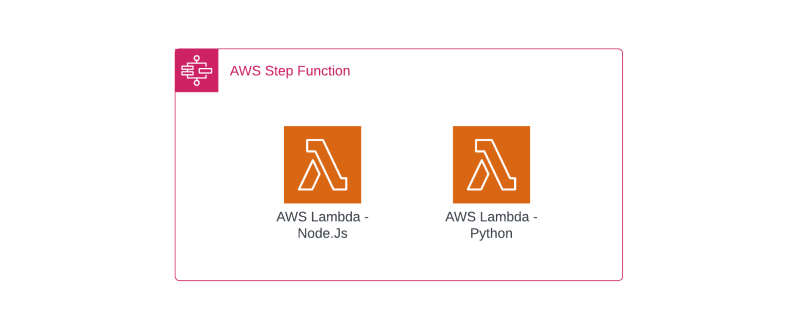Polyglot programming, the practice of using multiple programming languages within a single project, has become increasingly popular in software development. This approach allows developers to leverage the strengths of different languages to create efficient and flexible systems. In this post, we'll explore the concept of polyglot programming and demonstrate how you can achieve it in serverless architecture using two powerful AWS services: AWS Step Functions and AWS Lambda.
Real world use case
Recently I worked in a project which had two development teams, one specializing in Node.js based web app development and another on data science using Python.
The teams collaborated effectively by using isolated AWS Lambda functions tailored to their expertise, orchestrated through AWS Step Functions, allowing them to seamlessly integrate their code and deliver a powerful and efficient data-driven web application.
The advantages of this approach include highly focused teams and rapid development, all facilitated by the flexibility and scalability of serverless computing with AWS Lambda and Step Functions.
Getting Started with AWS Step Functions and Lambda:
Before we dive into polyglot programming, let's briefly introduce the key players: AWS Step Functions and AWS Lambda.
The AWS Step Functions are a serverless orchestration service that allows you to coordinate multiple AWS services into serverless workflows. They provide a visual representation of your workflow, making it easy to design, monitor, and troubleshoot complex applications.
AWS Lambda, on the other hand, is a serverless compute service that lets you run code without provisioning or managing servers. Lambda functions can be written in various programming languages, making them a perfect fit for polyglot programming.
Designing a Polyglot Architecture:
To get started with polyglot programming using AWS Step Functions and Lambda, you'll need to design a system that leverages the strengths of different languages. Here's a high-level overview of the process:
1. Identify Tasks:
Determine which tasks in your application can benefit from different programming languages. For example, you might use Python for data processing, Node.js for real-time communication, Java for backend services, etc.
2. Create Lambda Functions:
Write Lambda functions in the languages of your choice. AWS Lambda supports a variety of languages, including Python, Node.js, Java, C#, and more.
3. Orchestrate with Step Functions:
Use AWS Step Functions to create a state machine that orchestrates the execution of these Lambda functions. Step Functions allow you to define the workflow, specify input and output data, and handle errors gracefully.
Integration and Orchestration:
Here's a simple example to illustrate the integration and orchestration of Lambda functions written in different languages using AWS Step Functions:
Let's say you have two Lambda functions:
Function A (Node.js) performs the data extraction.
Function B (Python) processes the extracted data and consumes langchain to provide advanced analytics.
Your Step Functions state machine can coordinate these functions in the required sequence. Step Functions handle retries, timeouts, and error handling, ensuring that your workflow runs reliably.
Best Practices:
As you dive into the concept of polyglot programming with AWS Step Functions and Lambda, keep these best practices in mind:
- Carefully design your workflows to minimize complexity.
- Implement proper error handling and retries in Step Functions.
- Monitor and log your functions for troubleshooting and optimization.
Conclusion:
Polyglot programming using AWS Step Functions and Lambda is a powerful approach that empowers developers to harness the strengths of multiple programming languages within a single application. By designing well-orchestrated workflows and following best practices, you can build efficient and flexible systems that excel in various tasks.
As you explore polyglot programming, don't hesitate to experiment with different languages and discover the perfect combination for your specific use case. The possibilities are limitless, and AWS provides the tools to make your polyglot dreams a reality.




Top comments (2)
Hello, Sandy 👋 Welcome to the Dev community.
Thanks a lot @randellbrianknight. Glad to be here 😇